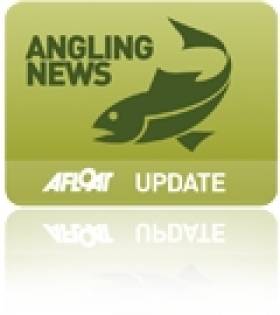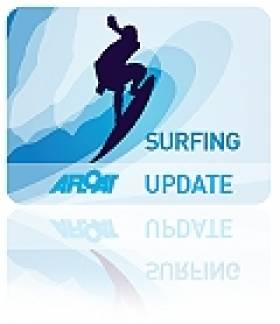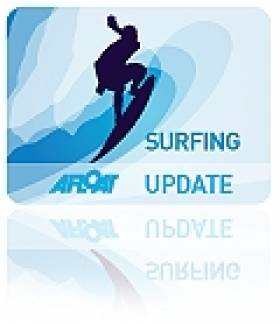Displaying items by tag: contest
NI Fields First Full Team at Commonwealth Fly Fishing Championships
#ANGLING - Two Newtownabbey anglers are part of a six-man Northern Ireland team competing at the 2012 Commonwealth Fly Fishing Championships, which started yesterday in Tasmania.
The Newtonabbey Times reports that Kenny Ferguson and team captain Alan R McDade set out for the Australian island last Wednesday for the competition that runs till 19 February.
They join Campbell Baird and Harvey Hutchinson from Carrickfergus, Banbridge angler Neil Cardwell and Harry McAteer Jr from Belfast for the week-long contest.
The six - who qualified from contests held throughout Ireland organised by the Trout Anglers Federation of Ireland - also comprise the first full team that Northern Ireland has entered in the competition.
Amateur Photo Contest Celebrates Shannon's Biodiversity
#LIFE ON THE SHANNON - MulkearLIFE has launched its amateur photo competition for 2012, with a prize fund of €1,000 on offer.
The contest celebrates the 20th anniversary of the EU LIFE programme and has the theme of ‘Exploring the Biodiversity of the Lower Shannon’. Images may cover any aspect of the theme, and can be submitted in any style from macro to landscape, black and white or colour.
There is no end to what type of image can be submitted. It could be an image of water, trees, plants, fish, invertebrates, fungi, mammals, birds, lichen, domestic animals - basically any living organism.
Though not essential, images that portray biodiversity in and along rivers, streams and waterways throughout the Lower Shannon region would be preferred.
Entry is free, and entrants can submit up to three images. Prizes will be offered in two categories: Children/Young Adults and Adults.
In addition, the overall winner will receive one full day's training in wildlife and landscape photography from a leading wildlife photographer later in 2012.
Full details of how to enter the competition are available on the MulkearLIFE website HERE. The closing date is 1 May 2012 at 5pm.
Ireland's Big Wave Surfers Showcased in New Film
Ireland's first ever 'big wave' surfing contest has been immortalised in a new documentary film (SEE TRAILER BELOW).
High Pressure – The Story of Ireland’s First Big Wave Surfing Contest follows the story of those hardy souls who took on the monster waves at Sligo's Mullaghmore Head in the inaugural Tow-in Surf Session last February.
Produced, directed and edited by Dave Mottershead and Daniela Gross, the film also examines the philosophy of big-wave surfing and the value of the waves to Irish coastal communities, and is described as a "must-see and must-have" by website Surfer Today.
"Local surfers believe there are still new surf spots to be found and challenged on the Irish coast," the site adds, noting that the film "opens the professional book of surfing in Ireland".
For further enquiries regarding High Pressure – The Story of Ireland’s First Big Wave Surfing Contest, contact [email protected].
Call for Entries in Eurosurf Poster Contest
Budding photographers and designers from across Ireland, the UK and Europe are encouraged to take part in the Eurosurf European Surfing Championships poster design competition.
The winner will see their photo or design appear on the official contest poster and other promotional materials, and will also have the use of a Bunk Camper campervan for the duration of the weekend festival in Bundoran this September.
Eurosurf press officer Shane Smyth said: “Every day [on websites] we see some amazing images and designs relating to surfing. With such artistic talent out there, we decided to offer this opportunity to anyone who wants to take part with the hope of seeing their design appear on the official Eurosurf poster."
Full details for entries are available on the Eurosurf Bundoran website. The closing date for submission is Wednesday 10 August, so get your creative hats on!



























































